You know the scene. It’s pitch black, the soundtrack’s gone suspiciously quiet, and our “hero” decides the smartest move is to split up and walk toward the noise.
Cue every viewer on their couch: “Don’t go in there!”
Welcome to the horror movie paradox – where survival instincts vanish, flashlights flicker dramatically, and everyone suddenly forgets how to run in a straight line. These moments make us yell, laugh, and sometimes root for the villain just a little (don’t lie, you’ve done it).
Let’s celebrate the 15 most gloriously dumb things horror movie characters always do – because without them, our favorite scary movies wouldn’t be half as fun.
ID 33785800 ©Nyul | Dreamstime.com
15 Funny Horror Movie Clichés and Dumb Decisions We Secretly Love
1. Investigating the Creepy Noise (Because Curiosity Kills… Everyone)
Rule number one of horror survival: if you hear a weird sound – don’t follow it! Don’t peek, don’t whisper, don’t “just check.”
But horror characters? Oh, they have to. It’s like an irresistible urge coded into their DNA. “Hmm, a creepy whisper in the attic at 2 a.m.? Sounds like a great time to die!”
Laurie in Halloween (1978) hears a bump and wanders off like she’s in a Home Depot ad for bravery. Carolyn in The Conjuring (2013) literally follows the sound of ghostly clapping into pitch darkness – with no backup.
Girl, please. We all shout at the screen, “Don’t go!” but deep down we’re grinning, popcorn flying, because we live for that moment when they do.
2. Splitting Up Like It’s a Great Idea
“Let’s split up,” says someone, as if dividing your life expectancy by four is a strategic move. Horror groups treat teamwork like a suggestion – because apparently, confronting evil alone is faster.
At least Scooby-Doo had snacks and a dog. In The Texas Chain Saw Massacre (1974), it’s just screaming, running, and bad decisions. And in Cabin in the Woods (2012), the scientists literally program them to split up – it’s that baked into horror DNA.
Every time a character says, “You go that way,” a killer somewhere high-fives the screenwriter.
3. Dropping the Keys (and the Flashlight) at the Worst Possible Moment
Nothing screams “about to die” like fumbling for keys in slow motion while a shadow approaches. Why does adrenaline instantly turn everyone’s fingers into overcooked spaghetti?
In Scream (1996), Sidney drops everything and turns her back – classic. In Jeepers Creepers (2001), the flashlight, the keys, their sanity – all gone within ten seconds.
It’s cinematic law: the second you’re one foot from freedom, gravity becomes a murderer. Somewhere, Final Destination is taking notes.
4. “Let’s Stay the Night in This Obviously Haunted House!”
Imagine pulling up to a mansion where every window screams “demon mortgage” – and still unpacking your overnight bag. Horror characters see crumbling Victorian architecture and think, charming fixer-upper!
From The Haunting to House on Haunted Hill, the setup never changes: flickering lights, a thunderstorm, a portrait whose eyes definitely move. The realtor whispers, “No one’s lived here for years,” and they’re like, “Perfect for a weekend getaway!”
Honestly, half of the horror could be solved by checking Yelp reviews.
5. Forgetting How to Run (or Tripping Every 5 Seconds)
Apparently, terror makes your shoelaces unlearn physics. Horror victims can sprint for five seconds before tripping on absolutely nothing – grass, air, their own confidence.
Meanwhile, the killer strolls like he’s window-shopping and still catches up. Friday the 13th turned tripping into a sport. The Descent (2005) raised it to an art form – caves, claustrophobia, chaos.
At this point, running in horror movies is less cardio, more interpretive dance.
6. Saying “I’ll Be Right Back”
Ah, yes, the horror equivalent of a death certificate. In Scream, Randy literally warns everyone: “Never say ‘I’ll be right back!’” And then, of course, someone does.
Every. Single. Time.
It’s like characters think irony is a bulletproof vest. Spoiler: it’s not. Honestly, we should just have drinking games for this line – take a shot every time someone says it, then another when they don’t come back. You’ll be haunted by the hangover and the ghost.
7. Going Toward the Light / The Basement / The Closet / Literally Anywhere Bad
If a space requires a flickering flashlight, that’s the universe saying “Nope.” But in horror? It’s a personal challenge.
The Ring – a barn. Psycho a basement. The Grudge – any doorway with vibes. Why, why do they go there? Because apparently, human curiosity outweighs survival.
Rule of horror: nothing good happens under one light bulb swinging like it owes rent.
8. Ignoring the Creepy Local Who Warns Them
There’s always a local. A mysterious gas-station guy or diner waitress who mutters, “Don’t go up there.” But our heroes? “Thanks, random stranger! We’ll head straight there.”
In Cabin Fever (2002), the locals literally describe the plague. In Pet Sematary (1989), Jud says, “Sometimes dead is better,” and they respond, “Challenge accepted.”
At this point, horror protagonists deserve Darwin Awards. The townsfolk try to save them – and we just sit back with popcorn like, “Natural selection’s working overtime.”
9. Not Turning On the Lights
Electricity exists. Lamps exist. But no – let’s wander through the pitch-black house using a phone flashlight the size of a Tic Tac.
Even in modern horror – Insidious, Hereditary, Paranormal Activity – it’s always barely lit. Like, do these people pay per lumen?
If ghosts ever meet someone who flips on the light switch immediately, they’d just retire.
10. Going Back for the Pet (Or the Doll. Or the Phone.)
We get it. You love your dog. We do too. But if your Labrador is barking at an invisible entity in a Victorian hallway, maybe just… go.
Still, horror characters always go back. For the dog. For the creepy doll. For the dead phone.
Annabelle (2014): “Let’s chase the haunted doll!” Sure, Jan.
Poltergeist (1982): “They’re here!” But first, save the clown toy.
Look, loyalty’s admirable. But maybe wait until after the demons’ moved out.
11. Investigating the Strange Smell / Noise / Blood Trail
Nothing screams “final scene” like following a trail of blood. In The Thing (1982), that blood test scene is genius – but also a PSA: don’t touch mysterious fluids.
In Saw, people find entire torture chambers and still wander deeper. “Hmm, ominous red puddle – probably fine.”
Honestly, if your ceiling drips blood, that’s not a plumbing issue. That’s a priest-plus-therapist combo job.
12. Thinking the Killer Is Dead (He’s Not.)
ID 64709726 ©Antonio Guillem | Dreamstime.com
Every slasher ends the same way: the killer down, heroine crying, spooky music fades. And just when she exhales – BAM! Surprise resurrection!
Halloween, Friday the 13th, Scream, A Nightmare on Elm Street – all repeat offenders.
At this point, we should just add an extra step to CPR: “Check pulse, then stab again.”
13. Forgetting Technology Exists
We live in the age of smartphones and Google, yet horror characters act like it’s 1982. No one texts for help, drops a location pin, or even films the ghost for TikTok.
Cell service always fails conveniently, and even when it works, they use it to scream “Hello?” into the void.
Honestly, the first horror movie where someone uses Find My Friends will end in five minutes flat.
14. Ignoring Every Obvious Red Flag
The mirrors fog up with words. The kid starts drawing “Mr. Tall Man.” The realtor says five families vanished here. And what do they say?
“It’s probably the wind.”
The Amityville Horror (1979): walls bleed. Hereditary (2018): family tree screams “run.” Nope – they redecorate instead.
Denial isn’t just a river in Egypt; it’s a horror protagonist’s entire personality.
15. The Ultimate One: Going Back Inside
The grand finale of bad decisions. You escaped. The nightmare’s over. The sun is shining. And then you hear… a noise.
So, of course, you go back inside. Because curiosity and poor judgment are soulmates.
The Others (2001), Get Out (2017), and Evil Dead (2013) all toy with this – that compulsion to reopen hell’s front door.
Honestly, if the credits roll and you’re still alive, stay outside. You won. Don’t refund your survival.
Halloween, Horror Movies, and the Deeper Roots of Fear
Halloween has become the ultimate horror movie season – the one night of the year when watching people run toward danger actually feels festive. It’s when we grab popcorn, turn off the lights (bad idea, obviously), and binge all the slasher classics we’ve been quoting all month.
But beyond the costumes and jump scares, Halloween has deep roots in ancient traditions honoring the dead, like Samhain in Ireland or Mexico’s vibrant Día de los Muertos (Day of the Dead). And it’s far from unique – many cultures around the world hold celebrations that remember ancestors, honor spirits, or welcome the souls of the departed.
If you’re curious about these fascinating worldwide festivals (and how different cultures celebrate life and death), check out our full guide on global celebrations similar to Halloween. It’s a reminder that behind every spooky movie marathon lies centuries of storytelling about life, death, and everything hauntingly human in between.
Why We Keep Watching (and Secretly Love Every Dumb Decision)
Because it’s hilarious. We yell at the screen, we clutch the popcorn bowl, we hide behind pillows – and then we laugh mid-scream. Horror isn’t just about fear; it’s about that delicious mix of tension and comedy that keeps us alive, entertained, and a little smug. Every time a character whispers, “Is anyone there?” or walks straight into a creepy basement, we feel like geniuses for knowing what not to do.
Those “Don’t go in there!” moments are what bond horror fans everywhere. It’s cinematic group therapy – camp, chaos, and catharsis wrapped in fake blood and bad choices. We roll our eyes, we giggle, we gasp, and then we press play again. Because without these questionable life decisions, horror movies wouldn’t have rhythm. There’d be no suspense, no buildup, no payoff – just common sense, and honestly, who wants that?
Deep down, these scenes give us a safe way to flirt with fear. They make us feel smart, brave, and part of the story. It’s comforting to think I’d never go in there. (Would we, though? Maybe not.) That mix of superiority and shared fear is what makes horror movie clichés so timeless.
And filmmakers know exactly what they’re doing. Movies like Scream, Cabin in the Woods, and Tucker and Dale vs. Evil don’t just use these tropes – they celebrate them. They wink at the audience, turning clichés into clever commentary and turning fear into fun. It’s horror’s ultimate magic trick: turning the ridiculous into the unforgettable.
So, yeah – we’ll keep yelling, “Don’t open that door!” We’ll keep laughing at the tripping, the dropped keys, the bad timing. Because even when we know what’s coming, it still makes our hearts race and our inner critic scream. Horror isn’t just about what scares us – it’s about the pure joy of watching someone else make the worst decision imaginable… and loving every second of it.
The Takeaway (Before You Go Investigate That Noise)
ID 97418462 ©Erikreis | Dreamstime.com
Next time you watch a horror flick and someone says, “I’ll be right back,” you already know – they won’t.
And when the protagonist walks into a creepy attic at 3 a.m. with a candle and no plan, grab your popcorn. That’s horror gold.
Because deep down, we don’t just love the scares – we love the stupidity. It’s what makes horror movies such a delicious mix of fear, frustration, and laughter. So go ahead, scream at the screen. The characters won’t listen… but the rest of us are yelling right there with you.
A Final Word from Someone Who Knows a Bit of the World Behind the Screen
With my background that includes some media courses, I can tell you – there are recipes for every genre. From romantic comedies to thrillers, there’s always a rhythm, a set of conventions, and a structure that makes stories work. Horror is no different. Whether it’s a slasher in the shadows or a ghost in the attic, every film follows certain patterns: tension, misdirection, and that perfect jump-scare timing.
But the magic isn’t in following the recipe – it’s in how directors, writers, actors, and composers bring it to life. The artistry of horror lies in blending those familiar ingredients – the script, the performances, the cinematography, the music – into something that still manages to surprise us. That’s why the best horror movies don’t just make us scream; they stay with us.
Alfred Hitchcock understood that better than anyone. His films weren’t about gore – they were about suspense, psychology, and impeccable storytelling. The Birds still makes me shiver, decades later. And on the other side of the spectrum, House of Wax (2005), with Jared Padalecki, reminds me how modern horror can mix glossy visuals with pure, adrenaline-pumping fear. Two very different styles – both unforgettable.
So yes, this article was written for a laugh – because sometimes we need to laugh at the chaos, at the predictable jump scares, and at the people who always run toward the danger. But none of that diminishes the brilliance of the genre itself. Horror is one of the most creative spaces in cinema: it pushes boundaries, experiments with emotion, and reveals what really scares us – not just monsters, but being human.
That’s what keeps horror fascinating. It’s not just blood and screams – it’s art, rhythm, and psychology. And whether we’re laughing at the clichés or hiding behind our fingers, we’re still feeling something. That’s the mark of great storytelling – and the reason horror will always have a place in every filmmaker’s and every viewer’s heart.
Love horror but hate bad decisions? Share this with your horror-loving friends – and tag the one who’d definitely go check that noise.
Frequently Asked Questions About Funny Horror Movie Moments
Why do horror movie characters always make dumb decisions?
Because fear makes people irrational – and in movies, that’s entertainment gold. Filmmakers exaggerate bad decisions (like investigating noises or splitting up) to create tension, humor, and audience participation. These “don’t go in there!” moments keep viewers shouting at the screen, laughing, and fully engaged. It’s part of the fun – we love feeling smarter than the characters.
What are the most common horror movie clichés?
The biggest horror clichés include investigating creepy sounds, dropping keys, tripping while running, assuming the killer is dead, ignoring locals’ warnings, and splitting up. You’ll see them in classics like Halloween, Scream, Friday the 13th, and The Conjuring. Even modern films like Get Out or It Follows play with these clichés in clever, self-aware ways.
Why do we still enjoy these horror tropes even when they’re predictable?
Because they’re part of the ritual. We expect them, anticipate them, and love to laugh at them. Horror movies give us a safe space to experience fear – and predictable tropes make that fear fun. It’s a shared cultural game: we yell, they ignore us, and everyone wins (except the character who went into the basement).
What are some movies that parody or make fun of these horror clichés?
Movies like Scream (1996), Scary Movie (2000), Cabin in the Woods (2012), and Tucker and Dale vs. Evil (2010) poke fun at horror logic while still delivering great scares. They’re perfect examples of meta horror – films that know they’re horror movies and invite you to laugh at the absurdity of it all.
How is Halloween connected to horror movies?
Halloween is the season when horror thrives – but it’s more than just costumes and candy. The holiday’s origins go back to Samhain, an ancient Celtic festival honoring the dead. Over centuries, it evolved into the modern celebration we know – complete with haunted houses and horror marathons. Today, horror movies are the unofficial soundtrack of Halloween, blending ancient rituals with cinematic screams.
Are there other celebrations around the world similar to Halloween?
Absolutely! Many cultures have festivals that honor ancestors and spirits – from Día de los Muertos (Day of the Dead) in Mexico to Obon in Japan and Hungry Ghost Festival in China. These traditions share Halloween’s deeper theme: remembering the dead and celebrating life. You can explore them in our detailed guide to worldwide celebrations similar to Halloween.
Why do we yell at the screen during horror movies?
It’s human nature! Yelling “Don’t go in there!” is part of audience interaction. It’s how we release tension and feel in control while watching chaos unfold. Psychologists say it’s the same instinct that makes us cheer at sports – we’re emotionally invested and love reacting out loud.
What makes funny horror scenes so popular on social media?
Because they’re relatable. Everyone’s yelled at a movie character doing something dumb – it’s universal comedy. Funny horror clips go viral on TikTok, YouTube, and Instagram because they combine fear, surprise, and laughter – the perfect emotional cocktail. They’re shareable, memeable, and endlessly rewatchable.
What’s the difference between horror comedy and regular horror movies?
Horror comedies like Shaun of the Dead, Happy Death Day, or Ready or Not blend scares with laughter. Regular horror aims to terrify you; horror comedy lets you laugh and scream. The balance keeps audiences entertained – and reminds us that fear can be funny too.
Photo sources (apart from Dreamstime): 1, 2 – created with ChatGPT, 3

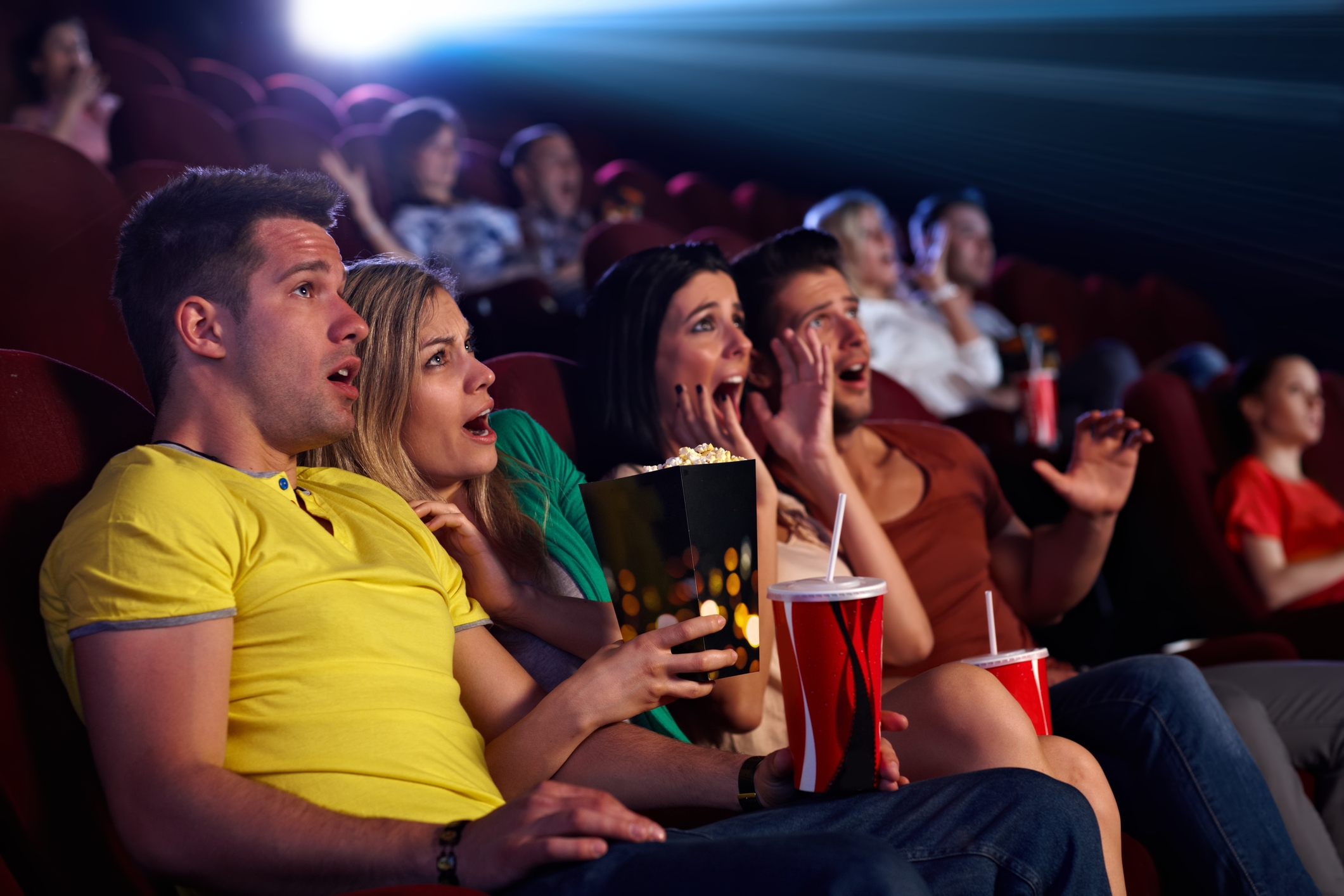
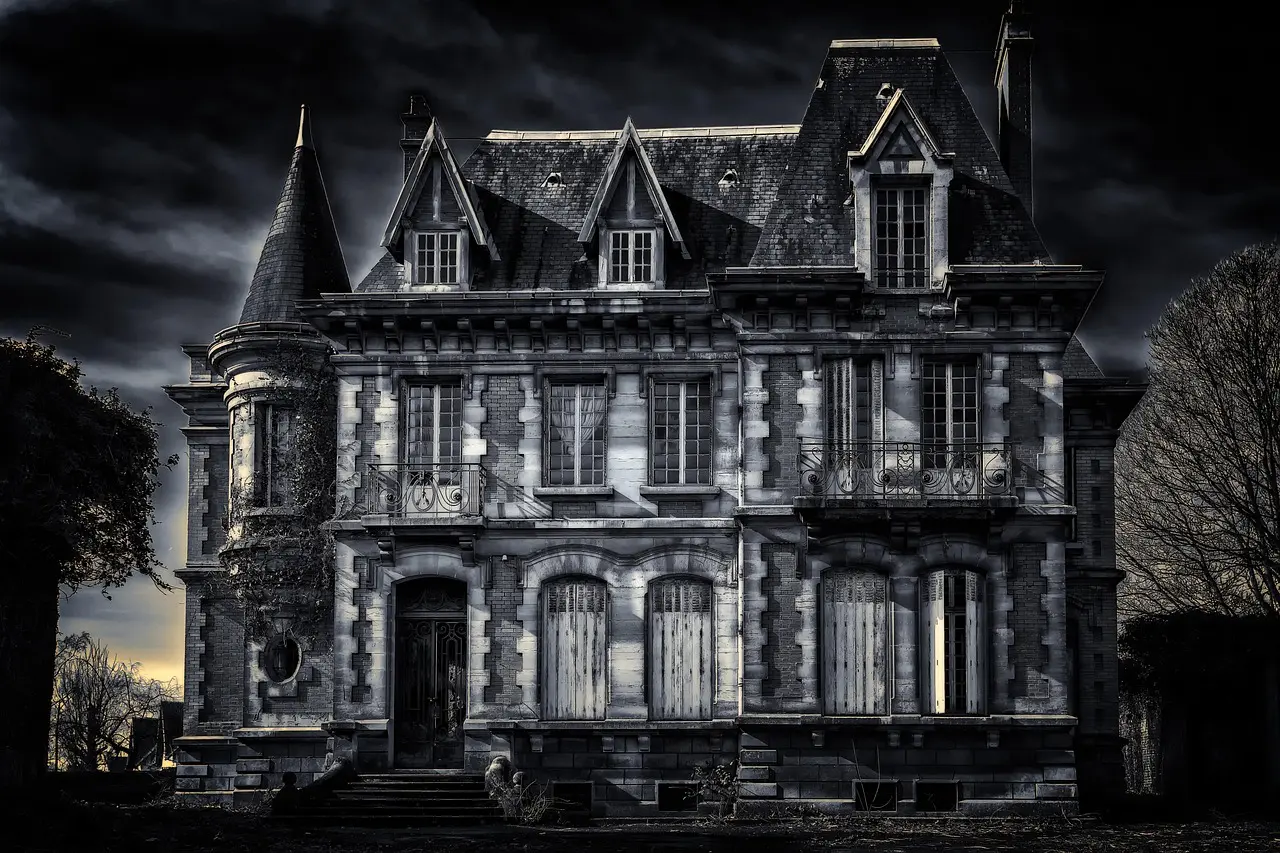
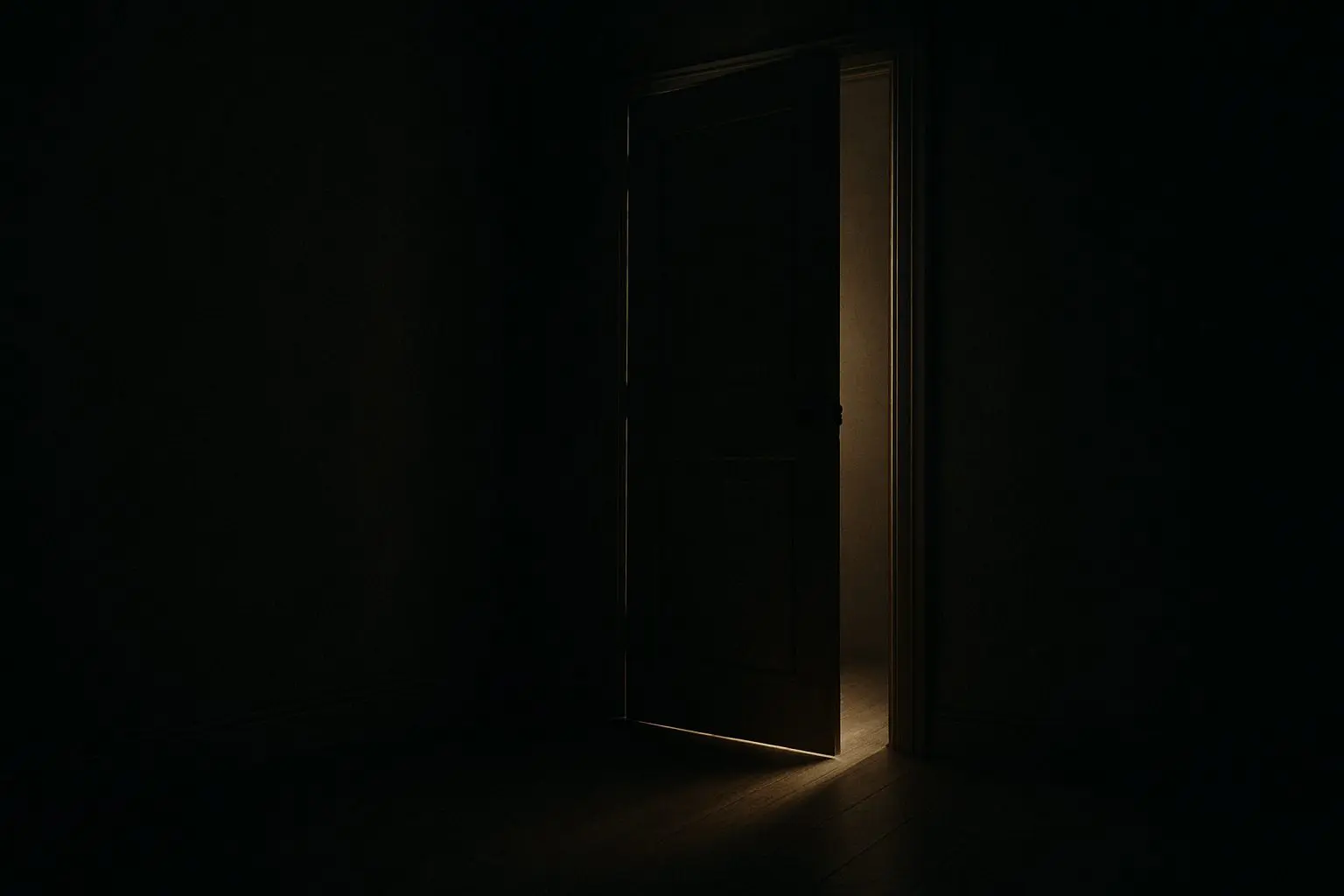
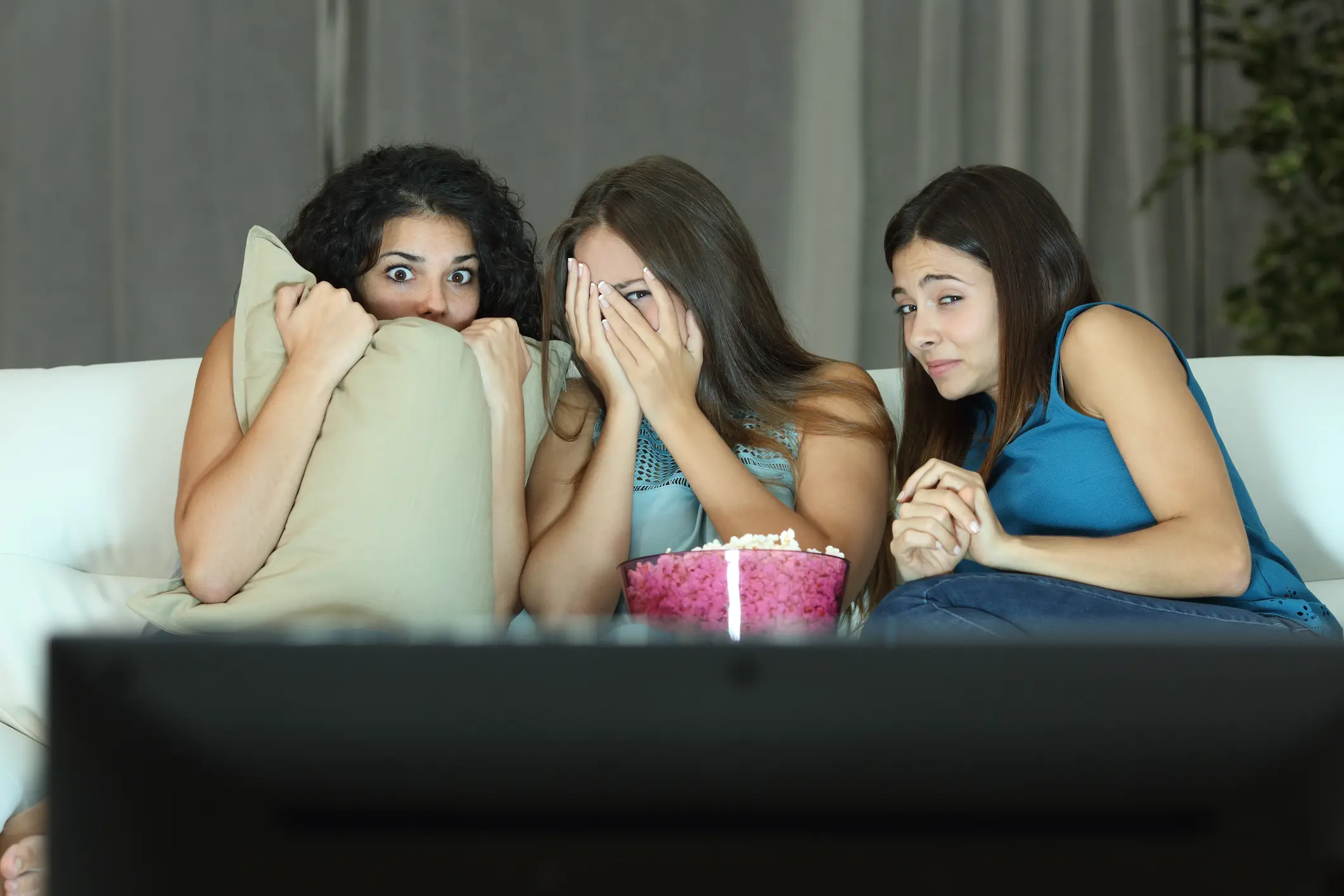
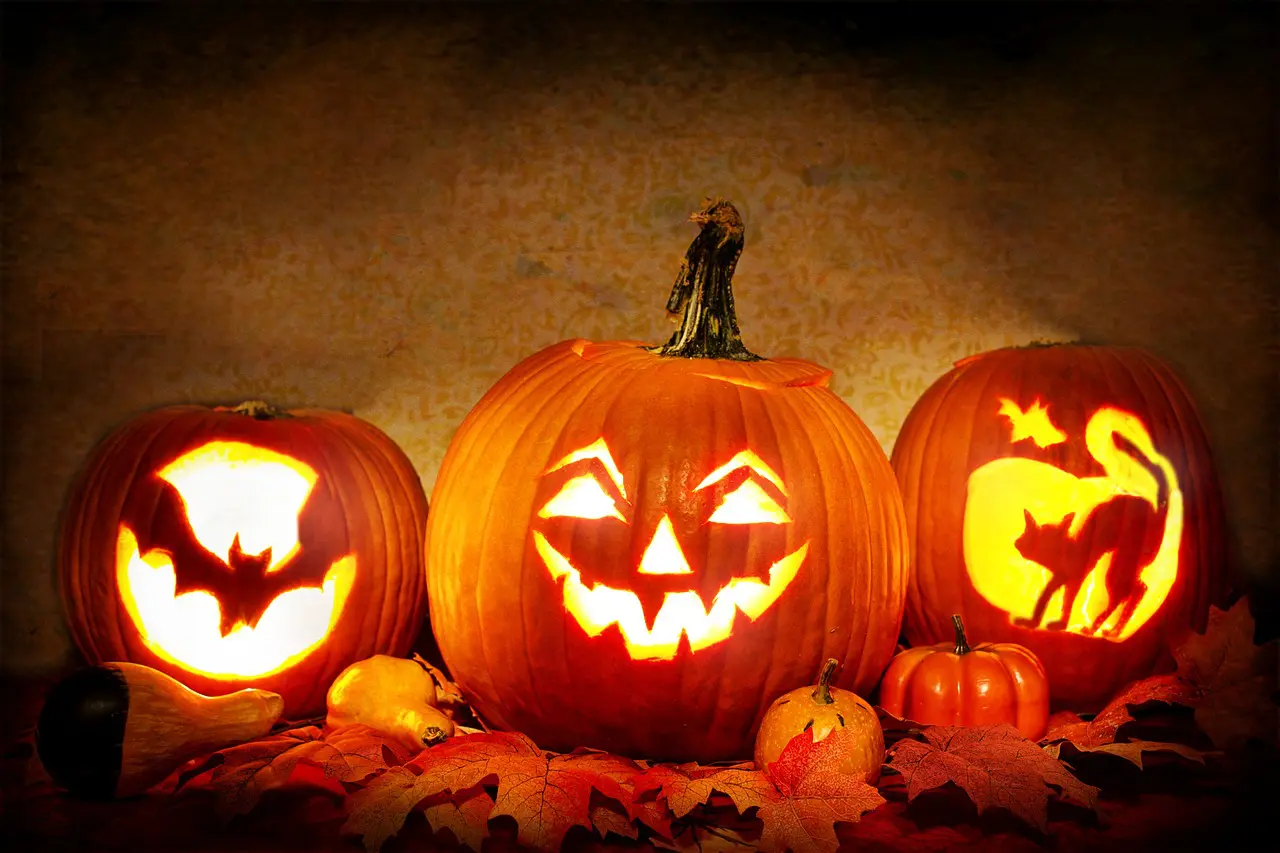
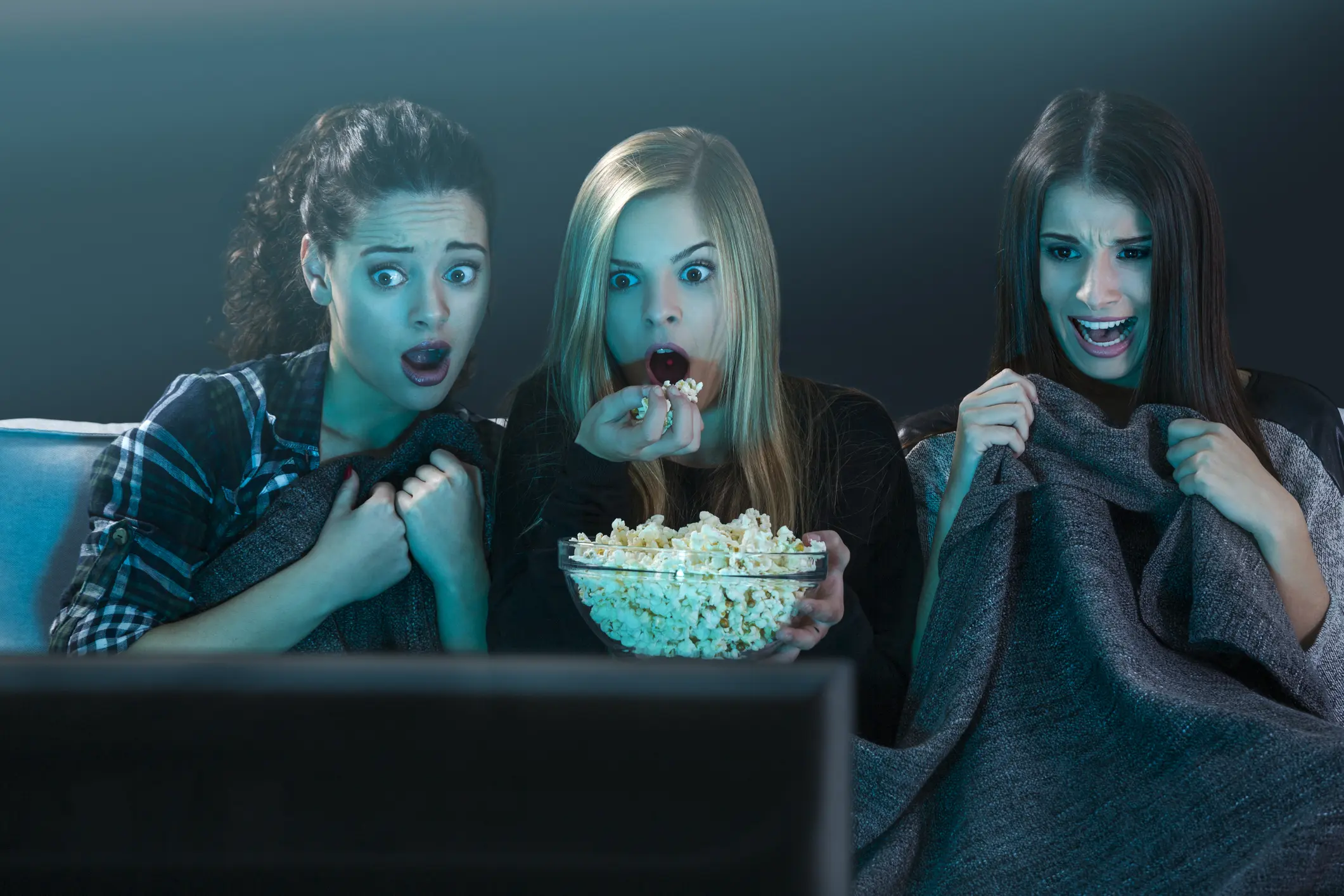
![Airline Passengers are Tech Savvy, But Cautious in Using Their Devices [Infographic] Airline Passengers are Tech Savvy, But Cautious in Using Their Devices [Infographic]](https://www.earthsattractions.com/wp-content/uploads/2013/10/globe_photoxpress2.jpg)

